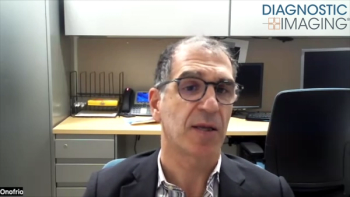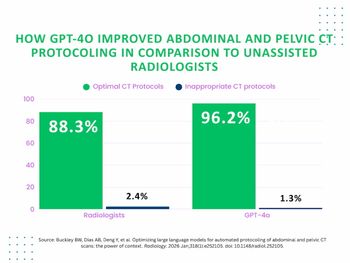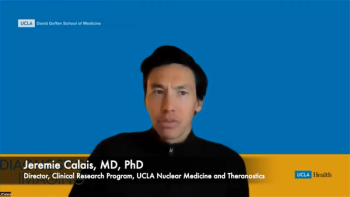
Can ChatGPT Have an Impact in Radiology?

In recent video interviews, Tessa Cook, MD, PhD, Nina Kottler, MD, MS, and Sonia Gupta, MD shared their insights and perspective on potential benefits and drawbacks of ChatGPT in radiology.
ChatGPT may have considerable potential for streamlining radiology workflows and reporting but concerns over optimal prompt engineering and hallucination effects may curtail the use of the artificial intelligence (AI) chatbot in radiology for the time being.
In recent video interviews. Nina Kottler, M.D., MS, Tessa Cook, M.D., Ph.D, and Sonia Gupta, M.D., discussed the potential capabilities of ChatGPT for radiologists and cautioned about current drawbacks of the technology.
Dr. Kottler suggested that ChatGPT could help remedy the frustration of receiving incomplete patient histories.
“We’ve never (received) great (clinical) histories. That decreases the quality of our output and causes us to hedge a lot,” notes Dr. Kottler, associate chief medical officer of Clinical AI and vice-president of Clinical Operations at Radiology Partners. “ChatGPT could either summarize information from the EMR (electronic medical record) and provide us with that robust patient history or summarize prior reports for us so we get that history and the pathology that we’re finding.”
Another potential benefit of ChatGPT could be converting patient summaries of radiology reports into different languages and possibly expanding access to care, suggested Dr. Gupta, the chief medical officer of Change Healthcare and a board member of the American Board of Artificial Intelligence.
(Editor’s note: For related content, see “
However, Dr. Kottler noted that the quality of the prompt input has a strong effect on the results one gets with ChatGPT. Drs. Cook, Gupta and Kottler all emphasize having appropriate safeguards in place to ensure the accuracy and verifiable referencing of information provided by ChatGPT. While Dr. Cook noted use cases with ChatGPT that have provided a synthesis of literature on a given topic, she said other cases have demonstrated “hallucination effects” in which there has been rewritten history or the “invention of citations that don’t exist.”
“Just because ChatGPT is far more fluent than any other chatbot we might have encountered in the past doesn’t necessarily mean it is not fallible in some way as well,” cautioned Dr. Cook, an associate professor of radiology, and director of the Center for Practice Transformation in Radiology at the Hospital of the University of Pennsylvania.
For more insights from Drs. Cook, Gupta and Kottler, watch the video below.
Newsletter
Stay at the forefront of radiology with the Diagnostic Imaging newsletter, delivering the latest news, clinical insights, and imaging advancements for today’s radiologists.




























